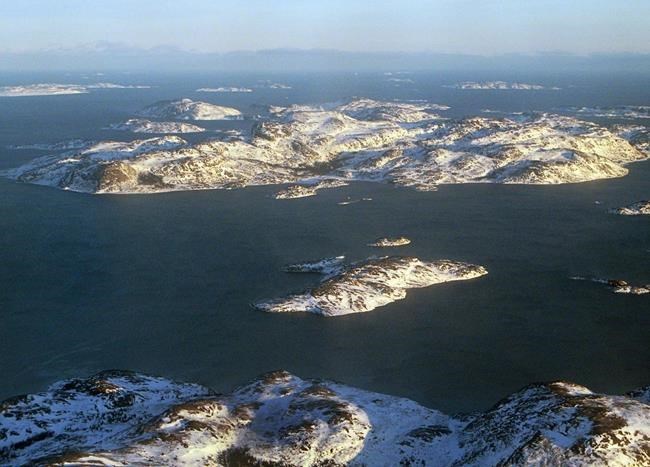ST. JOHN'S, N.L. — The availability of public housing improved slightly along Labrador's north coast this year, but observers say shortages and persistent systemic problems remain.
Numbers supplied by the Newfoundland and Labrador Housing Corporation show three of its units in the community of Nain have been repaired since April, and people have now moved in. However, there has been no improvement in the town of Hopedale, where four of 18 units are still in need of major repairs before they can be inhabited.
"It's pretty hard when they're not fixed up proper and people are waiting," said Hilda Pijogge of Hopedale's Selma Onalik Safe House, which is a shelter for women and children fleeing violence.
Like much of Labrador's Inuit Nunatsiavut region, housing in Hopedale in scarce, forcing some to live in overcrowded homes, Pijogge said in an interview Thursday. Those four units would make a big difference, she added.
Newfoundland and Labrador's housing corporation operates a total of 56 units in three of Nunatsiavut's five fly-in communities along Labrador's coast: Makkovik, Hopedale and Nain, the region's northernmost town.
Five of the corporation's 34 homes in Nain are vacant and awaiting major repairs, which is down from eight in April. About 1,200 people live in Nain, and seven people are on the waiting list for a public housing unit, corporation spokesperson Michelle Hunt Grouchy said in a recent email.
In Hopedale, there are nine people on the waiting list for the four vacant units. The town is home to about 596 people.
Further south in Makkovik, four homes are run by the province's housing corporation, and all are occupied. One person is on a list waiting for a spot.
Funding is in place to repair all nine units in the region, Hunt Grouchy said, adding that so far, tenders have been awarded for six units.
Housing shortages are well documented in Nunatsiavut and across Inuit Nunangat, the traditional homeland of Canada's Inuit, spanning Labrador, Quebec, Nunavut and the Northwest Territories.
Marie-Josée Houle, Canada's federal housing advocate, said earlier this month that the current levels of federal investments aren't enough to "remedy the human rights violations caused by the housing shortage" in the region.
Houle visited Nunavut and Nunatsiavut in October and concluded that inadequate housing has led to overcrowding, increased contact with the justice system, and to the exacerbation of mental health issues and tension within families.
Overcrowding also puts people at a higher risk of diseases like tuberculosis, which killed a 14-year-old boy in Nain in 2018.
The latest census shows 18 per cent of Nunatsiavut residents lived in overcrowded houses, and 28 per cent lived in homes that needed major repairs.
Lela Evans, the NDP's elected member for Labrador's north coast region, says it's nearly impossible to afford a new home in the area, let alone maintain one. Costs to build and service a new lot can run beyond $300,000, she said in an interview Wednesday.
"And that's without the house," Evans said. "That's really cutting down on the number of houses you can build."
It's also expensive to get building and maintenance materials to the north coast, which is only accessible year-round by air, or during the warmer months by ferry, Evans said.
"If we were connected by a highway, we could go over to Labrador West," Evans said. "People could go to Walmart." Instead, there's just one ferry serving travel and freight needs in the region, she added. Materials have to be trucked up from the larger centres on the island of Newfoundland and then shipped out on the ferry or — at a much higher cost — flown to the north coast on a plane.
"The stores on the north coast don't sell any building materials," Evans said. "They don't sell any two-by-fours or plywood or anything, because it's too expensive."
Until it becomes cheaper to get supplies to the north coast, housing shortages and all of their ramifications — including a need for public housing — aren't likely to go away, she said.
This report by The Canadian Press was first published Dec. 29, 2022.
— With files from Emily Blake in Yellowknife.
Sarah Smellie, The Canadian Press



